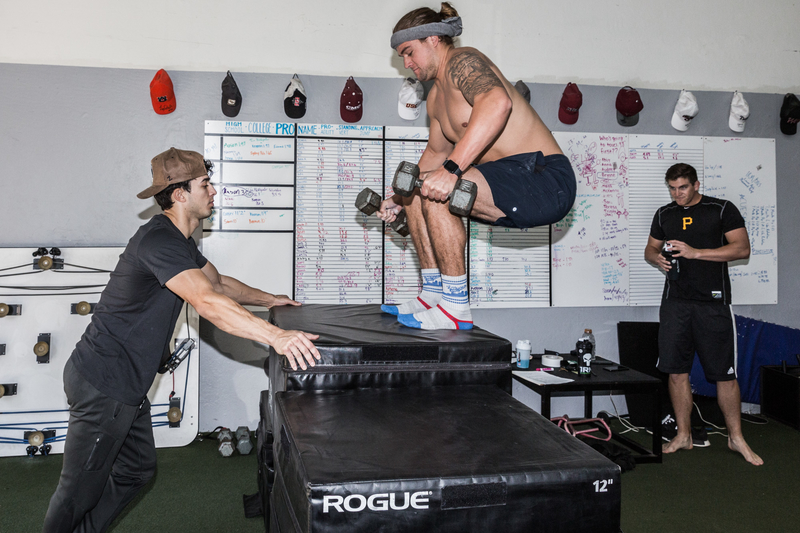What is the easiest way to jump higher? I can’t tell you how many times I’ve heard that question. To be honest the answer is pretty damn simple: assess what you’re currently doing and add in more of the opposite. In other words, if your jumping volume is high, lift heavier and more often. If you lift heavy all the time, add more jumps into your program. This sounds too good to be true, but its not. It’s literally that simple.
How is it that simple? Well it comes down to basic physics. Power = Force x Velocity. To increase an athlete’s vertical jump we have to increase lower body power by manipulating one of two training variables: force or velocity.
To look a little deeper into this equation, look at force. The force you generate can be defined by how strong is your squat, hex, deadlift or single leg work. The higher these numbers, the greater the force you can generate. The other training variable, velocity, isn’t measurable like your strength numbers, it’s the amount of actual high speed work you do, via jumping and sprinting. These two variables are what we need to assess in order to find the fastest way to get your vertical jump better.
Real Life Examples
Here are two real life examples of how keeping it simple actually can add inches to your vertical.
Athlete A – Female Volleyball player
Corrina has been playing volleyball for two years. Over these two years, Corrina has done something volleyball related 4 days a week. A normal practice involves, hitting drills, blocking drills, passing drills, and conditioning. If we think back to our two training variables, Corrina is spending all of her time on the speed side of the power equation. Corrina though, is tired of having a 19 inch vertical so she comes to 1RM Performance for training. Already knowing the athlete, and having worked with athletes like this in the past, I knew what the game plan was - get Corrina stronger! She already spend 4 days a week training the speed variable, so we’ll get her generating more force.
Results:
Over 6 weeks of training she had we more than doubled the amount of force she was able to generate, taking her hexbar deadlift from 115 to 255, squat from 65lbs x 10 to 145lbs x 6, and vertical from 19.6 inches to 24.2 inches. During the same time, we were able to improve her upper body strength and got her hitting balls harder. She also got significantly faster, going from a 1.85 laser 10 yard sprint to 1.62.
Athlete B – Male Recreational Athlete
Athlete B is me. I have been doing nothing but lifting and training athletes for the past 4 months. During the winter my life gets busy and I don't have as much time to train. I squeeze in time for lower body lifts - squats, deadlifts, single leg work, and some pulling work. Since it’s the rainy season, I don't play much beach volleyball and I don't do much jumping in my training. You can say that I spend the majority of my time on the force side of the power equation. Knowing I am doing nothing that involves velocity, I works in two days of jumping a week, since a 26 inch vertical is far from exceptable.
Results:
Within 3 weeks time, my vertical goes from 26 inches to 31.3, my broad jump goes from 8’2” to 9’3”, and my double broad jump go from 17’ to 19’2”.
Conclusion
Although it seems like it’s really hard to increase your vertical, it really isn’t when you keep it simple. We have two main variables to work with, force and speed. Take a step back and look at your current training/practice plan. If you’re spending most of your within the speed category train to generate more force. If you love lifting heavy and continue to train to improve your ability to generate force, add some more speed into your life.
When your training is dialed in and you’re still not jumping higher shoot me a message and I’ll be happy to go over your training. From there we can manipulate training variables to get that vertical and other lower body power measures moving in the right direction!
